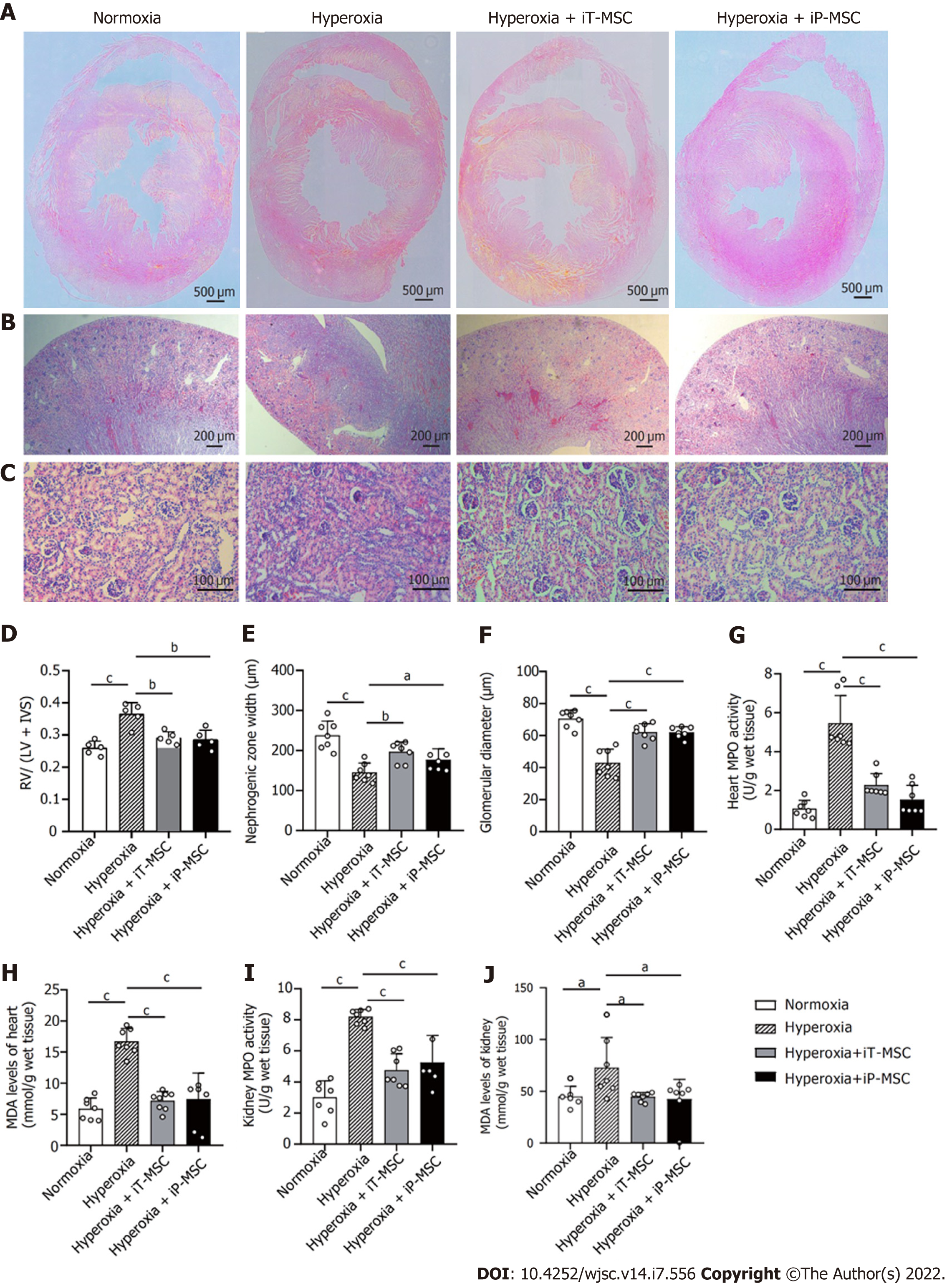Copyright
©The Author(s) 2022.
World J Stem Cells. Jul 26, 2022; 14(7): 556-576
Published online Jul 26, 2022. doi: 10.4252/wjsc.v14.i7.556
Published online Jul 26, 2022. doi: 10.4252/wjsc.v14.i7.556
Figure 6 Beneficial effects of human umbilical cord-derived mesenchymal stem cells administration in the heart and kidneys of hyperoxic neonatal rats.
A: Representative images of harvested heart sections stained with HE for morphometric analyses (scale bars = 500 μm); B and C: Representative photomicrographs of the hematoxylin and eosin stained sections of kidneys obtained at 40 × magnification (scale bars = 200 μm) and 200 × magnification (scale bars = 100 μm) respectively; D: Fulton’s index (right ventricle/left ventricle + interventricular septum) was measured to quantify the degree right ventricular hypertrophy (n = 5); E and F: Nephrogenesis was assessed through measuring the width of the nephrogenic zone and the glomerular diameter (n = 7); G–J: Myeloperoxidase and malondialdehyde levels were measured to evaluate the degree of inflammatory and oxidative reaction in heart and kidney tissues respectively (n = 7). aP < 0.05; bP < 0.01; cP < 0.001. iT: Intratracheal; iP: Intraperitoneal; RV: Right ventricle; LV: Left ventricle; IVS: Interventricular septum; MPO: Myeloperoxidase; MDA: Malondialdehyde; MSC: Mesenchymal stem cell.
- Citation: Dong N, Zhou PP, Li D, Zhu HS, Liu LH, Ma HX, Shi Q, Ju XL. Intratracheal administration of umbilical cord-derived mesenchymal stem cells attenuates hyperoxia-induced multi-organ injury via heme oxygenase-1 and JAK/STAT pathways. World J Stem Cells 2022; 14(7): 556-576
- URL: https://www.wjgnet.com/1948-0210/full/v14/i7/556.htm
- DOI: https://dx.doi.org/10.4252/wjsc.v14.i7.556









